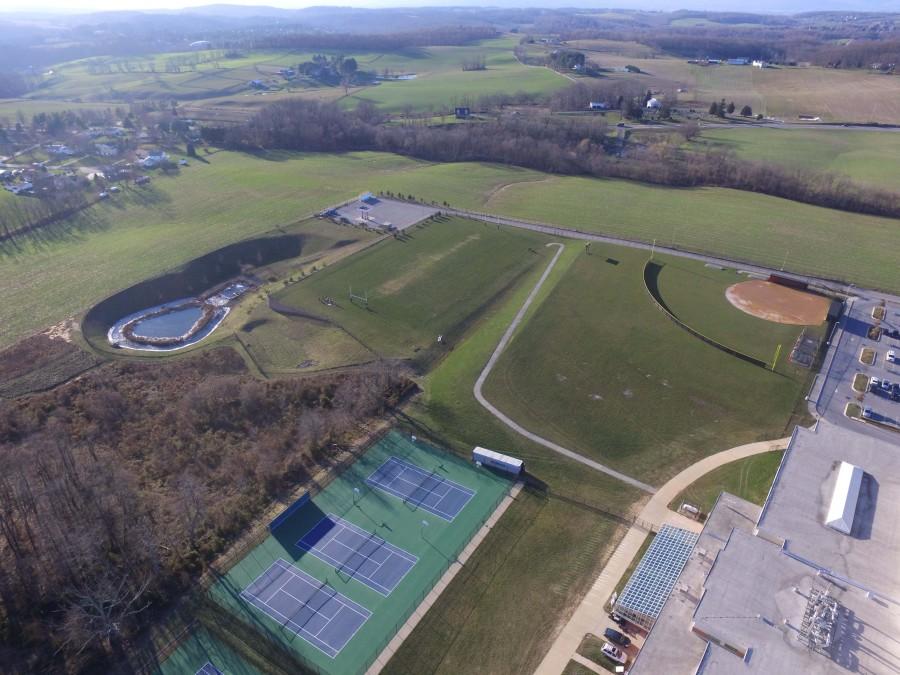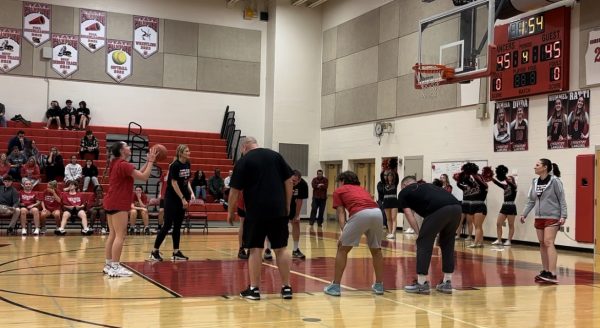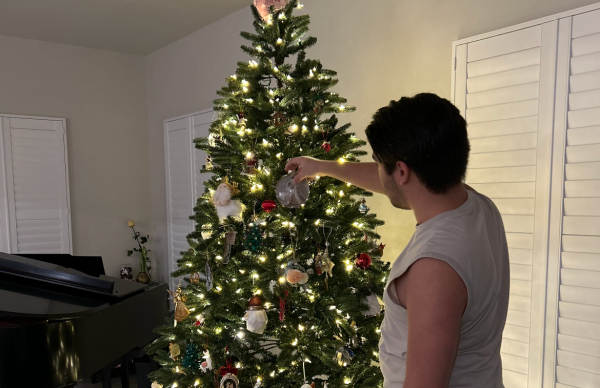Drones: Aerial success or flying nightmare?
January 15, 2016
What’s that in the sky? Is it a bird? Is it a plane? Well, it’s certainly not Superman, unless he decided to strap propellers and a camera to his back.
More likely, it’s probably a drone.
By definition, a drone is any aircraft without a human pilot aboard. They’re controlled by human operators on the ground below, using either their phones or remote controls.
Some drones are also referred to as quadcopters, based on the four propeller design.
Many consumer drones are also outfitted with a camera, the picture quality being dependent on the quality and price of the drone itself. Some can also be equipped with an external camera like a GoPro.
Many of the insanely cool photos and videos taken by professional drone operators can be found online. I’ve also provided a few pictures of LHS in a gallery at the end of this article.
Personally, I find it fascinating to see the world from a different perspective than just on the ground. Camera drones provide us with a view of the world that, without wings, we could never have dreamed of.
The drone is one of the many tech innovations sweeping the nation, and even the world. But while the drone may be extremely popular, will the skies become too crowded?
According to The Washington Post, around 400,000 drones were sold to consumers during the 2015 holiday season, which is far short of the government’s prediction of one million. I myself own one of those 400,000, and can say that I am thrilled with the one I purchased.
While it is a pretty insane statistic, it’s probably safe to say that a good number of those purchases were the cheap toy drones for kids, not the higher end ones used by professionals.
What about the stories we’ve all heard about the incidents involving drones?
While there have been a few scares and minor injuries, there have not been any reports of major incidents or injuries involving the flying machines. There have been reports of near-misses with larger aircraft, but most of those were due to operator incompetence.
Tech Republic compiled a list of 12 incidents that occurred in the last few years.
Amid the drone craze, electronic commerce giant Amazon revealed their newest prototype design for their fleet of “Prime Air” delivery drones in late November 2015. The video, which can be found here stars former Top Gear host Jeremy Clarkson, who describes the new design and how the drone will work.
The drone, in theory, will have a design allowing it to rise vertically to a certain height and then take off horizontally towards its destination. It won’t be operated by a pilot, but will rather use “sense and avoid” technology to avoid obstacles on the way to its destination.
The drones are designed for long distance travel in order to deliver packages in as little as 30 minutes after ordering. An Amazon spokesperson told The Verge “One day, seeing Prime Air vehicles will be as normal as seeing mail trucks on the road.”
While Amazon’s drone service seems very ambitious, and something that I would love to see in the future, the Federal Aviation Administration has yet to revise its rules for the commercial use of drones, those of which currently prevent the use of drones for said purposes without special permission.
Along with this, the days of free and careless consumer drone usage are near an end. Starting December 21, 2015, drones of certain weight specifications will be required to be registered online or by paper by the FAA, and be outfitted with a registration number given to the operator. Tech magazine Wired created a handy list of drones that do and don’t have to be registered.
Believe it or not, my drone is registered.
FAA regulations include flying below 400 feet, keeping the aircraft in sight at all times, staying away from restricted areas, including airports and stadiums. Full details can be found here.
Going back to commercial use, the FAA has given exemptions to the rules to operators who obtained a pilot’s license, which makes no sense in the slightest. There is a huge difference between flying a nearly 400-ton Boeing 747 and flying a five pound drone.
Personally, I would love to see a special test and license designed for drone operators and operating their personal drones specifically, rather than using a test that has nothing to do with drone operation. Many drone manufacturers include a flight simulator and lessons in accompanying smartphone applications to let operators teach themselves.
So, where are we now? While drones have become one of the biggest tech successes in recent years, they still have a long way to go if they are going to take full flight.













